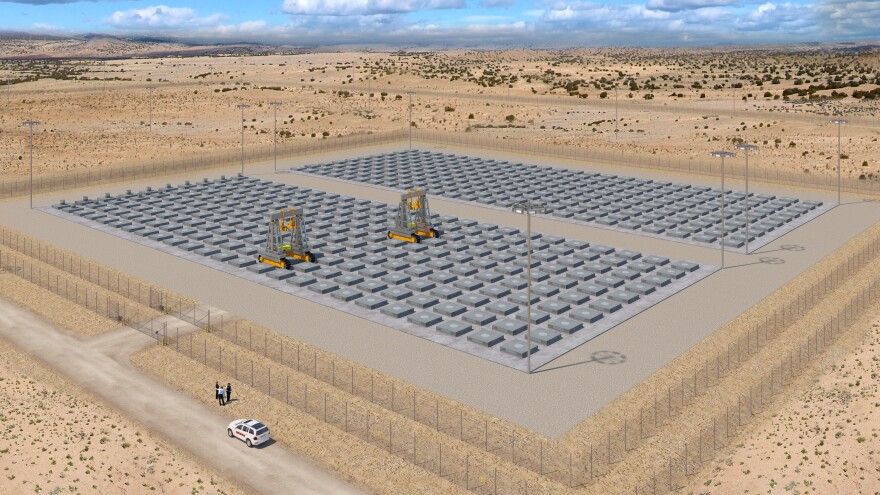During the New Mexico legislative session, Senate Bill 53 was introduced, which would prohibit the storage and disposal of radioactive material in New Mexico until the state has consented to the facility. Should the bill pass, it would complicate Holtec International’s efforts to build a nuclear storage facility in the Southeastern part of the state. The company plans to build a facility that can store 8,680 metric tons of uranium in commercially used nuclear fuel.
For the surrounding communities, Holtec’s proposed facility could lead to significant economic growth. Jason Shirley is the President of the Carlsbad Department of Development. He said Holtec’s project will provide 500 jobs and a $3 billion capital investment to communities in the area.
“This project brings hundreds of jobs to New Mexico," he said. "These are the kind of things that generally states would look for as far as economic development goes. These are well-paying, stable jobs that are going to come into our area, as well as billions of dollars in capital investment. It’s not only an influx of jobs into our economy, but it’s an influx of dollars into our economy as well.”
Shirley said that the threat of catastrophe with transporting the fuel cells is minimal.
“The Nuclear Regulatory Commission says that there’s about a one in 10 trillion chance of a catastrophic event happening. And if that event happened, the cask still does not breach,” he said. “There are other materials being transported every single day that have a far greater risk to be honest. Not only that, these materials and similar materials are being transported in the United States as we speak, without incident. While they’re very valid questions and very valid concerns, it’s important to look at what’s actual fact and not some of the rhetoric that’s being thrown around by people who want to stop the project for whatever their agenda is.”
Much of Southern New Mexico uses El Paso Electric company for power. The total amount of electricity the company generated in 2021 via nuclear power was nearly 5 thousand gigawatt hours, more than any other form of fuel.
Despite the potential economic upsides of having a nuclear storage facility in New Mexico, there are many who oppose the idea of storing radioactive material in the state. Mary White is a member of the Tularosa Downwinders Consortium. She said that her family was in Carizzozo during the Trinity Site Nuclear Blast, and generations later, families are still affected by radioactive contamination and are still fighting for compensation from the federal government.
“I’m the youngest of ten, and so these large families, we had many large families back then, and they’re telling, because the story repeats itself again and again and again where the entire family, if not one living person and they’re all gone of cancer,” she said.
When it comes to the proposed nuclear storage site in Southeastern New Mexico, White said that she doesn’t have faith in the federal government to do the right thing, based on what’s happened in the past.
“It was Native Americans who primarily were used to extract uranium, and there were no precautions used," she said. "It’s unnerving to think that our federal government knew, and they knew, because they had Geiger counters, people in the know would wear covered suits, they would wear dosimeters to measure radiation. But the workers didn’t have that protection.”
White said that the economic gain is simply not worth it in building a nuclear storage facility.
“In essence, it would really be selling New Mexico out. It would be very bad, not just for us, but for many, many future generations,” she said. “New Mexico’s not a dumping ground for garbage or human excrement. Much less something as dangerous as nuclear waste. We have been used in the past for the national stockpile of nuclear weapons, our uranium was mined here. Trinity was the first bomb. And that’s a track record [showing] the federal government has never come back to take care of us. Based on that track record, if the past is any indication of what the future might look like, we’re not in for any help from the federal government should anything go wrong.”

While a nuclear storage facility may bring money into the state, the risk of catastrophe, no matter how minimal, is too much for some New Mexicans.



